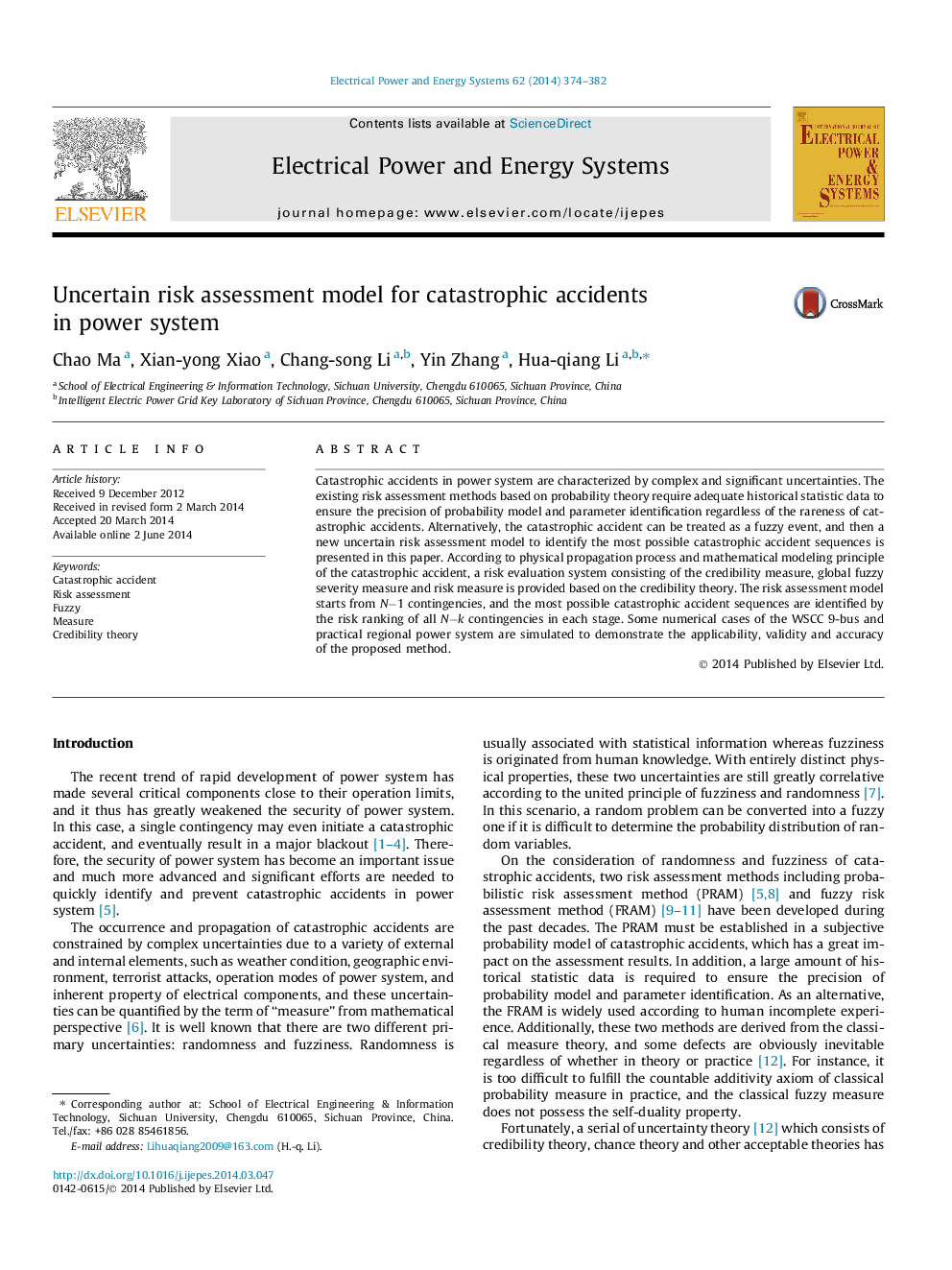| Article ID | Journal | Published Year | Pages | File Type |
|---|---|---|---|---|
| 398348 | International Journal of Electrical Power & Energy Systems | 2014 | 9 Pages |
•The uncertainty of catastrophic accident is quantified by the credibility theory.•The applicability, validity and accuracy of the proposed method are tested.•The method is not dependent on the physical property of uncertain variables.•The method provides a new option to cope with the rare event.
Catastrophic accidents in power system are characterized by complex and significant uncertainties. The existing risk assessment methods based on probability theory require adequate historical statistic data to ensure the precision of probability model and parameter identification regardless of the rareness of catastrophic accidents. Alternatively, the catastrophic accident can be treated as a fuzzy event, and then a new uncertain risk assessment model to identify the most possible catastrophic accident sequences is presented in this paper. According to physical propagation process and mathematical modeling principle of the catastrophic accident, a risk evaluation system consisting of the credibility measure, global fuzzy severity measure and risk measure is provided based on the credibility theory. The risk assessment model starts from N−1 contingencies, and the most possible catastrophic accident sequences are identified by the risk ranking of all N−k contingencies in each stage. Some numerical cases of the WSCC 9-bus and practical regional power system are simulated to demonstrate the applicability, validity and accuracy of the proposed method.
Graphical abstractThe occurrence and propagation of a catastrophic accident is very complex and constrained by several significant uncertainties, and it is different to be quantified by classical probability measure due to incomplete knowledge. Alternatively, the catastrophic accident is considered as a fuzzy event, and a new uncertain risk assessment model based on the credibility theory is proposed. Several case studies have testified its applicability, validity and accuracy.Figure optionsDownload full-size imageDownload as PowerPoint slide
